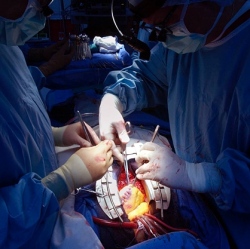
When large chunks of muscle are lost in severe injuries, the muscle does not grow back. But now, scientists have discovered a way in which it might be possible to regenerate some lost muscle with material from pig bladders, which is a technique quite common in medicine.
The five men in this study published yesterday (April 30) in Science Translational Medicine all suffered leg injuries so severe that 60 to 90 per cent of a muscle was destroyed, three while in the military and two others in skiing accidents. They had all been through multiple surgeries and long bouts of physical therapy, but their progress hit a wall. When so much muscle is missing, scar tissue, rather than skeletal muscle, grows to fill in the gap.
So they decided to try one more surgery using this experimental technique. Scar tissue was scraped away, and a thin sheet of biological scaffolding was placed at the injury site to coax the growth of new muscle. This scaffolding is made from the extracellular matrix of pig bladder.
Essentially, it’s pig bladder stripped of all cells, leaving only collagen, sugars, and proteins. The extracellular matrix from pig bladders is commercially available and commonly used in reconstructive surgeries in more passive parts of the body, such as herniated abdominal walls and breast reconstructions.
As the matrix breaks down, it releases chemicals that attract stem cells to the area. At the same time, patients are getting intense physical therapy, and the flexing of muscles coaxes the stem cells into muscle cells. Some muscle actually regrew for all the patients.
